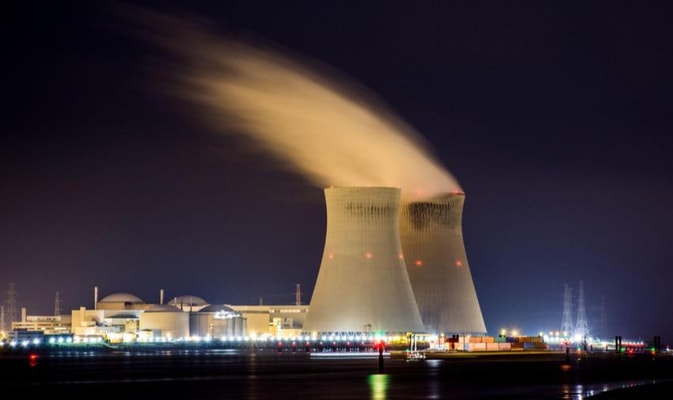Nuclear energy: how it can contribute to decarbonization and be part of the renewable trend

2 MAY, 2023
By Stefano Battel

In November 2021, we questioned whether the European Union could realize the plan to decarbonize the continent's economies without using nuclear power. After examining various reports from independent sources and calculating the energy needs for the coming years, we came to the conclusion that the inclusion of nuclear energy in the green taxonomy was absolutely necessary.
Nuclear power does not actually need fossil fuels to generate electricity, as it uses steam generated by water circulating around the core to drive the turbines that produce power in the plant. This does not directly affect greenhouse gas emissions and climate change and could facilitate the energy transition and reduce high energy costs. In terms of CO2 emissions, over the last 50 years, nuclear power has avoided the emission of approximately 55 Gt, which is equivalent to almost 2 years of global CO2 emissions related to total energy production worldwide.
To put the situation in perspective in 2021, nuclear power provided about 10% (according to the IEA) of global electricity generation. Globally, nuclear capacity declined by almost 3 GW as newly built reactors could not compensate for the more than 8 GW that were decommissioned. In addition, emerging markets and developing economies accounted for all new capacity, while most closures occurred in countries such as Germany, the United Kingdom, and the United States, which are members of the G7.
To achieve the Net Zero scenario, where greenhouse gas emissions are reduced to zero, and taking into account that global energy consumption is growing at an average rate of approximately 1% - 2% per year (according to S&P Global Market Intelligence), nuclear power will need to continue to expand to meet additional demand and, at the same time, reduce fossil fuel needs, temporarily offsetting the current limitations of renewables. This is important because, even as developed countries seek to reduce their energy consumption, global demand continues to rise, and nuclear power can be a solution to meet that demand without relying on fossil fuels.
At the time, and still today, nuclear power was seen as a profitable opportunity and a way to diversify the energy sector due to the supply/demand dynamic that was developing. The prices of uranium, the raw material needed for nuclear energy production, indicated that demand could be sustained due to the structural trend of decarbonization. On the other hand, the high mining costs and low prices of the previous decade had reduced uranium production, forcing the use of old stocks. All this made nuclear energy an attractive option both in terms of cost-effectiveness and diversification.
Importantly, to further complicate the situation, there were numerous unplanned supply disruptions due to the impact of the COVID-19 pandemic, which put further pressure on the supply chain in the extraction and processing of raw materials. Uranium is a highly trade-dependent commodity, as almost 80% of primary production is in the hands of state-owned companies, and more than 70% comes from countries with low uranium consumption, while almost 90% of consumption occurs in countries with little or no primary production (source: World Nuclear Association).
During the course of 2022, the situation described above would be consolidated and amplified by demand due to geopolitical tensions arising from the invasion of Ukraine, raising concerns about the security of supply. In addition, the inclusion of nuclear energy in the European taxonomy as a sustainable energy source became a reality, as previously envisaged.

How to take advantage of this trend?
Unlike other resources, uranium is not traded in a public market but is traded through private contracts between buyers and sellers. Therefore, for investors, the only option to access uranium spot prices would be through illiquid vehicles that may have premiums or discounts, such as trusts. In short, there are no simple and straightforward ways to take positions in uranium price appreciation, as is the case for other resources.
There are therefore two options: to invest directly in individual stocks focused on the broader sector, i.e. uranium mining and maintenance companies, or to use ETFs and buy the entire underlying basket. In our view, these two solutions are the most effective way to access the uranium market, as equities are often more profitable than direct exposure to uranium prices.
Unfortunately, as institutional investors, we faced the problem that at that time there were no harmonized securities investment funds (UCITS) available in the market, and the option of investing in individual shares was not feasible as these were standard fund-based asset management schemes.
So the only option was to create an instrument specifically designed to invest in them. We decided to structure multi-season bonus security with a strike level of 62.5% of the lowest initial level. If we had used the equal weighting methodology, it would have resulted in a product with a much higher entry price or with unfavorable conditions (such as an earnings cap and a lower strike level), which would have negatively affected the final return. In this way, we have achieved a balance between protection and participation in the market upside.
For those interested, we have chosen the instruments that we consider most relevant and worth monitoring if you wish to invest in this sector to improve the diversification of your portfolio.

Unfortunately, there is currently no possibility to invest in companies involved in the construction and research of nuclear power plants using thorium or fast reactor types, such as the moving wave reactor. This is because these companies are all privately owned, such as Terra Power, the start-up Newcleo, and Tokamak Energy, which makes them difficult for investors to access.


